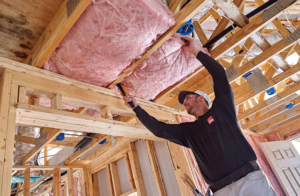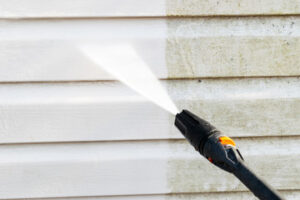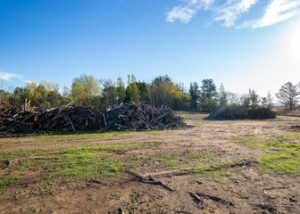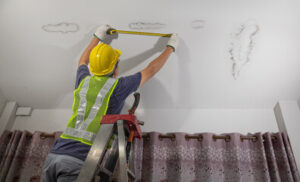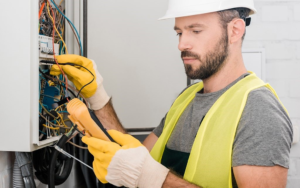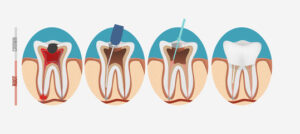SEO is a long-term strategy that takes time to show results. It’s important to convey this to stakeholders from the beginning to avoid unrealistic expectations and establish documented, consistent processes and data that earn trust.
Emerging verticals like voice, local, and image search are adding nuance to the SEO landscape. But a successful SEO strategy still requires an exceptional user experience and content that addresses the intent of search queries. Click the https://www.rankboss.com/ to learn more.

Today’s consumers rely on search engines to find the products and services they need. In order to attract these customers, brands need to appear in searches for specific terms and phrases, a process known as keyword optimization.
Incorporating keywords into your content can dramatically improve its SEO. However, it’s important to use the right keywords in the right places. For example, it’s crucial to include your keyword in the title tag, header tags, and body of the page. This will signal to search engines that the page is relevant to users’ queries.
The first step is to identify the keywords that are most important to your business and your target audience. You can do this by using tools such as Moz’s Keyword Explorer, AnswerThePublic, and LSIGraph. Once you have a list of broad SEO keyword categories, you can start to brainstorm ideas. This will help you discover what topics your audience wants to learn about and how you can meet their needs.
There are two primary types of SEO keywords: short and long-tail. Short-tail keywords are typically one or two words and have high search volume. However, they tend to have fierce competition and are difficult to rank for. Long-tail keywords are more specific and have lower search volume, but they can be more effective in attracting qualified traffic.
Once you have a list of potential keywords, it’s important to evaluate them for relevance and accuracy. A keyword’s relevance to a piece of content is based on its context and how closely it matches user intent. Highly relevant keywords are more likely to rank higher in SERPs.
Besides the main keyword, you should also incorporate secondary keywords in your content and use them in your headings. Use H1s to highlight your primary keyword, then incorporate the keywords in H2s and H3s to emphasize important points. This will help you rank for a wider range of search terms and attract more visitors to your site. Also, don’t forget to use your keywords in the alt text of images. This will help search engines interpret the image as part of your content.
On-page optimization
On-page optimization refers to the process of optimizing the content and HTML source code on your website in order to rank higher in search engines. It is an essential part of SEO, and should be done in conjunction with off-page optimization. This is because the two work together to improve your site’s rankings and traffic. In addition, on-page optimization helps you optimize your site for human visitors as well as search engine bots.
Title tags and meta descriptions are key elements of on-page optimization. Title tags are the words that appear in the search engine results page (SERP) for a given keyword, and they can have a significant impact on how your page ranks. A good title tag should include your target keyword and be short, concise, and compelling. Meta descriptions, on the other hand, provide a brief summary of your page’s content and can influence whether or not searchers click on it.
As with other aspects of SEO, on-page optimization is constantly evolving. Back in the day, it was all about using keywords in certain expected places and making sure you had a specific number of keywords on each page. Now, however, SEO is much more focused on relevance. This means that your on-page content should align with the user intent behind a given search query, and it should be as high-quality as possible.
Fortunately, there are many tools available that can help you perform on-page optimization. These can help you identify keywords, analyze competitor content, and more. These tools can save you a lot of time, and they can also give you insights into what is working and what is not.
To make the most of on-page optimization, you should start with a thorough audit of your site. This can be done with a tool or manually, but it’s important to take the time to do it right. Then, once you’ve completed your audit, implement the changes you’ve identified. Finally, you should regularly monitor and update your on-page optimization to ensure that it is up to date. This will help you keep ahead of the competition and continue to see results.
Off-page optimization
Off-page optimization is a set of tactics that boosts the visibility of your website. It includes activities like building backlinks, optimizing local listings and social media marketing. Off-page SEO works best when it is combined with on-page SEO. Combining both strategies ensures that your content is highly visible to search engines and users alike. On-page SEO optimizes the content on your site, including title tags and meta descriptions. It also involves technical optimization, such as mobile-friendliness, safe-browsing, and HTTPS security. Off-page SEO focuses on building authority, including earning backlinks from high-quality sites. It also includes social media promotion and influencer outreach.
To achieve the best results, your off-page SEO strategy should be comprehensive and rooted in sound business practices. Treat it as a campaign, not just a tactic, and focus on the long-term benefits of your efforts. This way, you can measure success and fine-tune your strategy as needed.
Backlinks are the most important off-page SEO factor, indicating that your content is trustworthy and valuable. In addition to being a ranking signal, backlinks are an excellent way to generate referral traffic. However, it is important to note that not all backlinks are created equal. It is important to focus on quality over quantity and only build links from high-quality websites.
Online reviews and ratings are another off-page SEO strategy that can help improve your website’s credibility. These comments provide insight into what users think of your brand and products. You can encourage customer feedback by promoting your Google Business Profile and encouraging happy customers to leave reviews on third-party review sites. While you shouldn’t incentivize customer feedback, it is a good idea to monitor and respond to reviews quickly and thoroughly.
Forums and community engagement are also off-page SEO tactics that can help increase your website’s visibility. By immersing yourself in conversations and sharing your expertise, you can position yourself as an authoritative voice in the industry. This will help you earn the respect of other professionals and increase your search engine visibility. This type of off-page optimization requires consistency and patience, but it is a great way to grow your business.
Link building
Link building has become a key component in search engine optimization (SEO) and helps you improve your website’s reputation, online visibility, and ranking. This is because search engines look at the quantity and quality of inbound links to a page when ranking it for keywords. This is why it is important to know the right way to do link building, and avoid any techniques that could be considered black-hat SEO.
One of the best ways to build quality links is to create content that attracts attention in your industry. This can include full-length beginners guides, strategies surrounding content marketing and SEO, or even a popular topic that is currently trending. You should then share this content with your audience, such as through social media or your email newsletter. This can help you generate natural, high-quality links.
Another great technique is to create curated lists of content that are useful for your target audience. These can be anything from top 10 lists of companies, products or people to rankings of sports teams and universities. These lists are often cited by other sites because of their value, and can be a good way to get links.
Inbound and outbound links are both essential for a successful website. Inbound links are those that direct users to your site, while outbound links are those that redirect users to other websites. Both types of links can increase your site’s ranking and traffic, but it is important to balance them so that you don’t end up with a spammy looking website.
Although there are many different ways to build links, the most important thing is to do it naturally. The goal of a link-building campaign should be to help your brand or product grow, not simply to generate links. For this reason, you should avoid link-building techniques that manipulate search engines, such as buying links or link farms.
There are many other ways to build links, including writing guest posts on other websites and participating in social media. You can also use tools like LinkMiner to identify broken links on other websites and suggest your content as a replacement. However, it is important to note that some link-building tactics are frowned upon by Google, so you should be cautious and only use safe practices.

